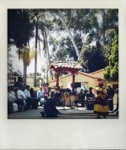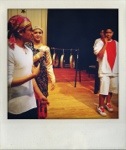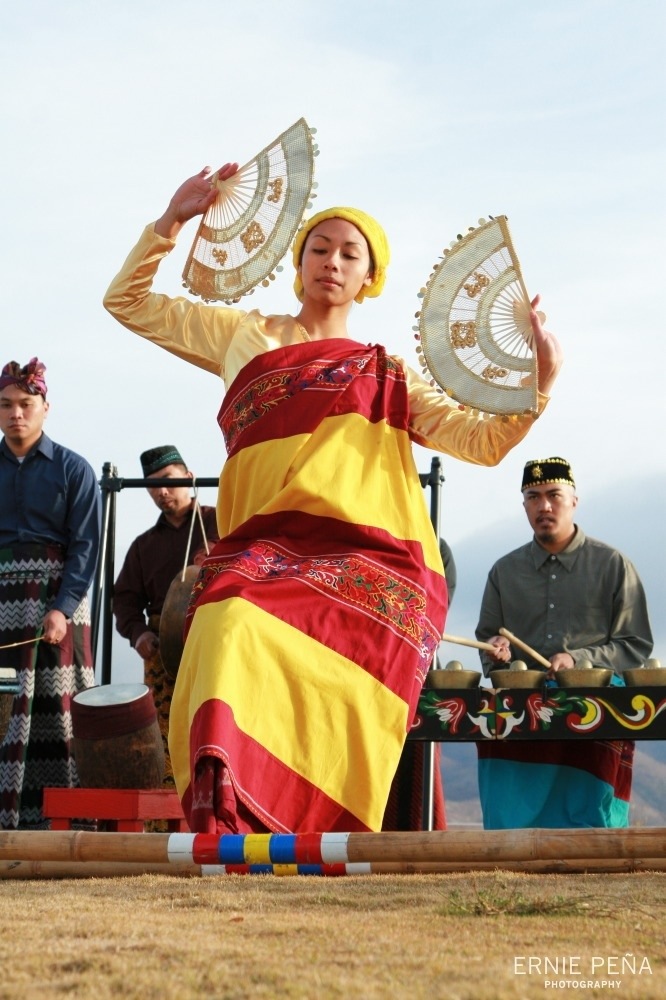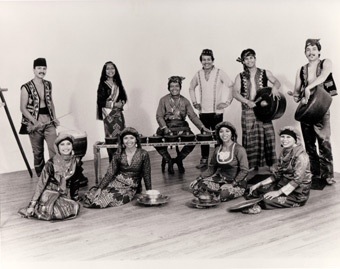America is in the Heart
Why was America so kind and yet so cruel? It was like going to war with other soldiers; some survived death but could not survive life.
America is the Heart is a breathtaking semi-autobiographical book by Filipino immigrant, poet and activist Carlos Bulosan. First published in 1946, this book follows the life of a Filipino immigrant, from his early childhood in the Philippines to his immigration to the United States, and vividly depicts the struggles he faced as a provincial child from a poor family, as well as, in later years, a migrant and a laborer.
This book had a profound impact on me personally, as it is unmatched in Filipino-American literature. The book has been compared to John Steinbeck’s classic The Grapes of Wrath.
“America came to him in a public ward in the Los Angeles County Hospital while around him men died gasping for their last bit of air, and he learned that while America could be cruel it could also be immeasurably kind. . . . For Carlos Bulosan no lifetime could be long enough in which to explain to America that no man could destroy his faith in it again. He wanted to contribute something toward the final fulfillment of America. So he wrote this book that holds the bitterness of his own blood.” – Carlos P. Romulo, “New York Times”
“The premier text of the Filipino-American experience.” – Greg Castilla
Private Kulintang Lessons Available
Announcement:
Private kulintang music lessons available!
Taught by Danongan “Danny” Kalanduyan
– Master kulintang teacher and performer
– 1995 National Endowment for the Arts National Heritage Fellowship Awardee
– teacher of kulintang music for the past 30 years in North America, currently teaching at San Francisco State University
For details: dannykalanduyan at sbcglobal.net or dannysk at sfsu.edu. Link
House of Philippines Lawn Program
The “Soul of San Diego,” Balboa Park ranks as one of the most significant urban parks in the United States, covering 1,200 acres with more than 80 cultural, conservation, and recreation organizations. Every year the House of the Philippines has a Lawn Program.
Pakaraguian Kulintang Ensemble participated in the Lawn Program in 2006. This was yet another cultural exchange opportunity for PKE to advance it’s mission. Kulintangan is little known and less frequently practiced compared to such quintessential Philippine folk arts like tinikling, itik-itik or maglalatik, which reflect more than 300 years of Spanish rule and influence.
According to the House of the Philippines website,
The House of the Philippines is a place to learn about the history, culture and people of the Philippines. It is one of many cottages that make up the House of Pacific Relations located in Balboa Park, the cultural heart of San Diego. The mission of these Houses is to provide a cultural experience for the residents and visitors of San Diego.
Created in 1935, the House of Pacific Relations was originally constructed as part of the California-Pacific International Exposition in San Diego. The House of the Philippines came out of urgency from members of the Philippine American Community between 1959 and 1960 when the founding members started the process of applying with HPR. The whole point was to “to share the Filipino culture with the visitors from all over the world in the cultural center of San Diego,” said Juanita Santos, Past President & Founding Member.
In 1961, the House of the Philippines became part of the International Cottages in Balboa Park. Since then, the House of the Philippines has served as a place to learn about the history, culture, and people of the Philippines. It is one of the many cottages that make up the House of Pacific Relations located in Balboa Park, the cultural heart of San Diego.
The House of the Philippines is a non-profit organization operated by dedicated volunteers who donate their time and effort to continually improve the House as a means of sharing the Philippine culture with others. New members are always welcome. Monthly membership meetings are held at the House.
Pictured here are Mitchell Almoite, Bernard Ellorin, Christine Quidim, Sev Reyes, Jhoselle Padilla, and Joseph Ramirez.
For more information about the House of the Philippines and Balboa Park, please click on the following links.
House of the Philippines
Balboa Park
Cultural Exchange at Wangenheim Middle School
Pakaraguian Kulintang Ensemble’s mission is
to preserve the ancient tradition of kulintang by accurately representing and educating its audiences on the Autonomous Region of Muslim Mindanao (ARMM) cultures of the Maguindanaon, Maranao, Tausug, Sama, and Yakan ethno-linguistic groups
PKE advances the understanding of kulintangan through culturally appropriate programming and performances for audiences, based on anthropological research.
Cultural exchanges are an excellent opportunity for Pakaraguian to educate the community on the art and culture of Mindanao. One of the most widespread misconceptions about Kulintang is that it is Muslim music. This is not the case.
The art of Kulintang predates the spread of Islam throughout the Philippines. Performing arts troupes, claiming to represent an authentic repertoire of traditional culture, harm the perpetuation of kulintangan by presenting a fictitious ‘tradition’ dubbed as Muslim music.
Pictured below are Bernard Ellorin, Angeline Fasano and Joseph Ramirez, teaching students at Wangenheim Middle School in Mira Mesa, San Diego. This cultural exchange program took place in May 2007.
Mira Mesa has a large population of Filipinos: 20.7%, or roughly 16,560, of the suburb’s population according to the 2000 census.
PKE on MySpace
PKE music and picture archives can be found on MySpace. please click on the following link. MySpace
Kasingkil and Kasilasay
Below are pictures from Ernie Peña’s photo session with PKE in 2009.
Kasingkil: from the Maranao term singkil or ‘to trip,’ it is traditionally a solo or a dual Maranao woman’s bamboo dance that reenacts an excerpt of the Darangen where Paramatra Gandingan was caught in an earthquake caused by the tunong or forest spirits, but walked gracefully to safety out of the falling rocks and trees. In the traditional version of this dance, the rhythmic clapping of the bamboo is the musical accompaniment.
Pic 1: Kasingkil; Music: kasilisay
Pic 2: Kasingkil
Pic 3: Kasingkil
Pictured here: Jhoselle Padilla, Joseph Ramirez, Mochi Camaya, Bernard Ellorin, Eric Abutin, and Sev Reyes. The costume and instruments were obtained in the Philippines during the tribal tour and field research trips.
Master Danny Kalanduyan
Pakaraguian Kulintang Ensemble would not have been possible without the extensive field research and cultural exchange dimensions that have been carried out since 1994. Funding for these activities was provided by a grant from the National Endowment for the Arts and in-kind donation. In the first phase, from 1994 to 1997, Kulintang Master Danongan Kalanduyan traveled from PI and introduced the authentic music of Maguindanao and Maranao people to the rondalla musicians and percussionists of Samahan Fil-Am Arts and Education Center in San Diego, California. “Guru Danny” provided intensive workshops on the agong, babandil, dabakan, and gandingan instruments of the ensemble as well as private lesson on traditional kulintang pieces from ethnolinguistic groups of Southwest Mindanao. In phase two, Samahan formed the Pakaraguian Kulintang Ensemble and began to share the musical tradition throughout Southern California through lecture and performance. A CD was released and the group performed at the 12th annual Festival of Philippine Arts and Culture (FPAC), the largest festival of its kind in the U.S. In the summer of 2003, practitioners traveled to the Philippines as part of the KulArts Tribal Tour to gain first-hand experience and training from local masters and to bring back costumes and instruments for future demonstrations and study. Further field work has been carried out since 2003, as part of post-graduate studies for Bernard Ellorin at the University of Hawaii, Manoa.
Pictured here: Danny Kalanduyan, Bernard Ellorin, Chrustine Quidim, Eric Abutin, Mitchell Almoite, and Melody Batuyong.
Kulingtangan, the Music of Resistance
Kulintangan is a product of the indigenous communities of the Philippines and has proudly been considered “the music of resistance” against the harsh realities of Spanish colonization. Folk life traditions such as kulintangan are critical to affirming identity and community. They do so by connecting immigrants to their heritage, facilitating communication between generations, and creating a sense of community that spans the globe.
The national culture of the Philippines is strongly influenced by western civilization, and many of todays Filipinos have grown up with the view of having no other cultural past than a colonial one. For the last 500 years, the Philippines has been dominated by Spanish colonialism, American rule and Western influence. In actuality, a plethora of ethnolinguistic minorities have lived throughout the islands, maintaining customs that date back far before foreign presence. Kulintangan is little known and less frequently practiced compared to such quintessential Philippine folk arts like tinikling, itik-itik or maglalatik, which reflect more than 300 years of Spanish rule and influence.
Below are pictures from a photo shoot with Ernie Pena a few years ago. The instruments and costumes were all obtained during field work research in the Philippines, as these are not readily available in America. PKE Members pictured here include Bernard Ellorin, Raynard Abalos, Sev Reyes, Chris Feraro, Jhoselle Padilla, and Eric Abutin.
Pic 1: Paunjalay; Music: Te-ed
Pic 2: Paunjalay 2
Pic 3: Paunjalay; Music: Te-ed
Photo credit Ernie Pena
KulArts Philippine Tribal Tour 2013
PHILIPPINE TRIBAL TOUR 2013
Tribes of Mindanao, Philippines
February 1-12, 2013
Excerpt taken from http://kularts.org/wp/programs/tribal-tour/. KulArts Tribal Tour
Since 2002, Kularts has conducted its one-of-a-kind Tribal Tour, a hands-on field study, custom-designed for participants to explore, discover, and draw empowerment from indigenous Pilipino cultures of Mindanao. During the 12-day trip, participants will engage in meaningful interactions with T’boli, B’laan, Maguindanaon, and Manobo tribal leaders, shamans & healers, and masters artists in their ancestral homes in Davao del Sur, Sanggani, South Cotabato, and Maguindanao.
Please note that there is an application and interview process for each prospective tour member. Eligibility for participation in this tour requires contacting Kularts for an application and meeting the Participant Qualifications.
The application deadline w/ $50 non-refundable fee is November 15, 2012 (no refunds unless tour is cancelled.)
Kulintang Arts, Inc. popularly known as Kularts, was founded in 1985 by Robert L. Henry, Marcella Pabros, and Alleluia Panis to support the work of Kulintang Arts Ensemble (KAE), a ten-member music and dance company whose contemporary work was rooted in the indigenous traditions of the Pilipino people.
PKE on YouTube
On the islands of Mindanao and the Sulu archipelago, the kulintang and kulintangan (kulintang-on) gong chime tradition from the Islamized Filipinos are highly favored for celebratory occasions, weddings, social gatherings, and for driving away evil spirits. Like the gangsa, it is an indigenous form of Philippine music that should not be mistaken as “MUSLIM” music. Larger knobbed gongs and drum instruments are the main accompanying instruments to the compositions found in the Maguindanaon palabuniyan (Pah-lah-boo-knee-on), the Maranao Kakolintang (Kah-koh-lintang), and the Sama Tagunggu (tah-goong-goo) ensembles. Dances among the Maranao, Maguindanao and Sama are for rituals, for re-enacting epic stories and mimicking nature.
The Maranaw: are the people of the lake who have refined the kakolintang (Kah-kolintang) tradition in their province of Lanao Del Sur. Professional musicians and dancers are highly favored to perform for any special occasion whether it be for the completion of Ramadan, weddings, or for social gatherings. The Kalilang (Kah-lee-long) or feast with kolintang music is a ritual practice that is the essence of expressing the cultural arts of the Maranaw.
The Maguindanao: As the people of the flooded plain, the Maguindanaon Palanbuniyan gong ensemble tradition of Cotabato province is divided into two styles: the Kamamatuan (kah-ma-ma-two-on) or old style and the Kangungudan (kahn-gung-goo-dawn) or new style of pieces. Instruments in the Maguindanaon kulintang ensemble include the kulintang, the main melodic instrument consisting of eight knobbed gongs laid in a row, the dabakan (dah-bah-kahn) the gourd shaped drum with lizard skin, the agong (two larger knobbed gongs) and the gandingan (gone-ding-on) the four hanging knobbed wide rimmed gongs used for communication.
The first video is a PKE practice of the Kapagnor performance.
Kapagonor: derived from the Maranao root word onor or professional, Kapagonor is played to welcome an important guest to a Maranao village.
The next video is a PKE practice of the Binalig performance.
Binalig: a kangungudan or new style piece that will be played on the kutiyapi two stringed boat lute.
Pakaraguian Kulintang Ensemble, in the past, has practiced at the Kalusugan Community Services Filipino American Wellness Center, located in National City, CA. The footage was taken in 2006 and posted to YouTube in 2008.
The Tagalog word kalusugan translates to health in English. For more information on Kalusugan, please click on the following link.















